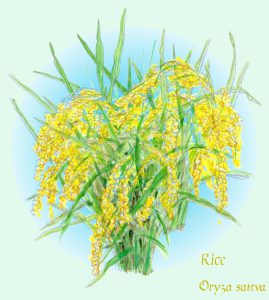Right now we are in the midst of the typhoon season. Even though the harvest season will be soon, “Rishuu” came a month ago. “Rishuu” is the first day of autumn by the old calendar known as 24 Sekki.
What’s 24 Sekki ?
In Japan, before the Meiji government adopted the Gregorian calendar in1873, people used the lunar calendar. However the lunar calendar shifts from the real seasons day by day. Some years could even have 13 months.
Farmers used the old calendar called 24 Sekki for their farm work. It reflects the real seasonal change because 24 Sekki divides a year into 24 seasonal periods along the celestial longitude.
The idea of 24 Sekki was invented in China a long time ago. It begins with the winter solstice.
First, you divide a year into four, at the winter and summer solstices, and the spring and autumn equinoxes. Then you put the first day of each season into the middle of each of the four periods. This means that the year’s divided into eight parts of about 45 days each. Then, when you divide each 45 days period in to three 15 days periods, you have 24 parts of known as 24 Sekki.
With the 24 Sekki calendar, we can see the seasonal change every half month. This is useful for rice field planning, so people used to use it with the lunar calendar.
In addition, each Sekki has its own name that sounds nice and has a profound meaning. For example, Kokuu means rain for grain; it lasts from the end of April until the first five days of May. During this period, farmers can spread their rice seeds.

